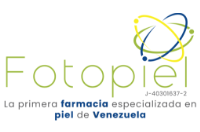COMENTARIOS SOBRE TRES CASOS DE LEISHMANIASIS TEGUMENTARIA AMERICANA CON REACCIONES DE MONTENEGRO NEGATIVAS
Palabras clave:
Leishmaniasis,Resumen
Se presentan tres casos de leishmaniasis tegumentaria americana,
que presentaron R. de Montenegro repetidamente negativas. En uno de los
pacientes las lesiones cutáneas eran múltiples, 27 en total; en otro, con
número mediano y en un tercero, la lesión cutánea era única. Les fue
indicado tratamiento con antimoniato de N-metilglucamina (Glucantime)
y todos cicatrizaron en un tiempo relativamente corto. Se hace el
comentario de que entre los enfermos leishmaniásicos, un grupo pequeño
no desarrolla defensas reconocibles con los recursos antigénicos
conocidos; este grupo de paciente anérgicos está formado en parte por
aquellos que desarrollan la grave modalidad clínica denominada
"tegumentaria difusa", la cual es incurable y la otra parte, por el grupo,
que es motivo de la comunicación actual, constituido por individuos cuyas
lesiones tienen aspecto clínico y evolución similar a la observada en los
leishmaniásicos comunes reactivos. Se considera muy interesante el
estudio de esta clase de enfermos leishmánicos, a fin de precisar los
recursos cutáneos que ayudan a producir la desaparición de las lesiones
también, indagar la incidencia futura de complicaciones naso-bucofaríngeas.
SUMMARY
It is well known that a large number of patients with tegumentary
leishmaniasis, develop cutaneous antibodies a few days after the inception
of the disease. A small group of patients however did not present defenses
which could be shown with the known antigens. A part of this group is
comprised by those which develop the serious clinical modality called
"diffuse tegumentary", which some estimate is produced by a different
species of leishmania. The other part of the anergic group which is
considered in the present report, was comprised by persons that in spite of
being negative to the Montenegro R., the clinic and the evolution are
similar to those observed in the leishmanic patients commonly reactive.
Some patients presented multiple cutaneus lesions and others on the
contrary, a single ulceration. In all, the lesions had the tendency to recede
spontaneo usly and when treatment is applied they disappear rapidly and
definitely. We consider it is interesting to investigate the quality of the
cutaneous defensive resources in these patients and to analyse the future
incidence of mucous complications. Three cases are described: one with
multiple lesions (27 in total); another,
Descargas
Número
Sección
Licencia
Publicado por la Sociedad Venezolana de Dermatología Médica, Quirúrgica y Estética







